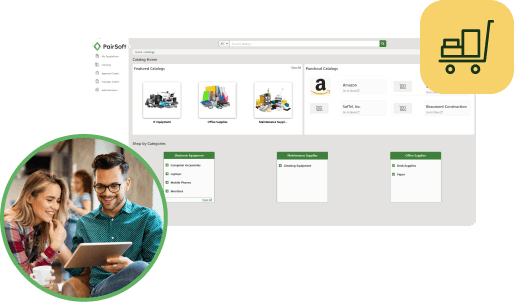
Janet Martin
Janet joined the PairSoft team upon its merger with Paramount Workplace, where she was also an integral part of the sales team for years. Janet resides in Michigan with her family.
View all posts by Janet MartinJanet Martin

This spring, our partner, Levvel Research, conducted a large survey of procurement and AP decision makers and influencers in organizations across all industries. The survey’s goal was to explore how digital transformation looks in the context of Procure-to-Pay (P2P). Levvel’s assertion is that a company’s use of P2P software is a key indicator of its digital transformation strategy, as P2P software brings a technological approach to the entire process. The full report, the 2019 Guide to Procure-to-Pay & Digital Transformation, is informative and enlightening, and filled with interesting statistics, so I encourage you to read it in its entirely. Here, though, I want to highlight the ways Levvel Research found that P2P is fueling digital transformation. But first it’s worth defining digital transformation, as it may well be one of the most popular tech term of the last few years.
Digital transformation is the integration of digital technology into all areas of a business, with the goal of strategically improving how a company operates and delivers value to its customers. The term “transformation” is somewhat misleading, though, as it implies there’s a finite point when a company has “transformed.” In reality, the commitment to digital transformation is a commitment to continual improvement, constantly challenging the status quo in order to improve processes, streamline workflows, promote accuracy and efficiency and provide the best value to stakeholders.
A key digital transformation strategy in P2P is creating synergy across multiple departments, including procurement, AP, finance and IT. This means implementing a unified procurement automation solution that reaches across functional areas and creates a whole that is greater than the sum of its parts. Cloud-based P2P software streamlines and unifies back-office spend operations, transforming the process in a way that adds new value to an organization.
Procurement automation enhances many aspects of internal and external workflows. By automating approval workflows, data transfers, information capture and supplier communications, automated P2P software improves an organization’s ability to control costs and manage orders, which effectively allows it to better control cash flow and promotes strategic financial planning.
Process automation is key, and emerging technologies such as artificial intelligence (AI), machine learning (ML), robotic process automation (RPA), big data and blockchain can amplify automation to drive true innovation for an organization. Levvel Research’s survey revealed that AI and ML are the two emerging technologies that have had the biggest impact on digital transformation thus far. Both can be used in multiple ways in both payables and procurement and are already being incorporated in some P2P software.
Digital transformation is no longer optional—companies must continually innovate or risk becoming irrelevant. A full 85% of enterprise decision-makers say they have a time frame of two years to make significant inroads into digital transformation or they will fall behind their competitors and suffer financially. Forrester predicts that 2019 is the year that digital transformation “goes pragmatic.” The technologies to promote and facilitate transformations are real, ready and within reach of companies of all sizes. This is particularly true in the area of procurement automation, where P2P software is leveraging practical, purposeful and emerging technologies to drive innovation and fuel transformation. Download your copy of the Levvel Research report here.
Talk to an expert today to uncover how your team’s procurement stacks up against the top performers in your sector.


